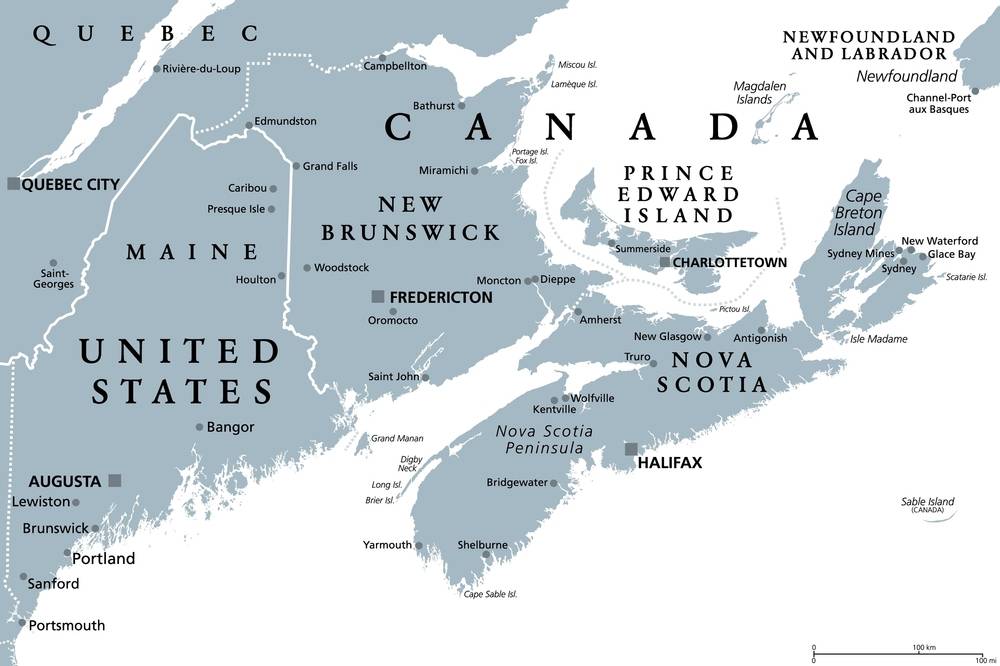Understanding which Canadian provinces are welcoming the most immigrants this year is crucial for those planning their future in Canada. Immigration patterns reveal not only where opportunities are growing, but also where support systems for newcomers are strongest. This insight can guide your relocation decisions and career prospects.
In this summary, I’ll walk you through the provinces leading in immigration numbers, highlight the factors attracting newcomers, and explain what this means for individuals and families looking to build a life in Canada. Whether you’re considering a move or advising others, this overview will help you navigate Canada’s evolving immigration landscape.
Canada’s Immigration Landscape
Canada’s immigration system is a globally recognized model combining federal leadership with provincial collaboration. The country emphasizes economic immigration through programs like Express Entry and Provincial Nominee Programs (PNPs), while also supporting family reunification and refugees. Demographic shifts, labor shortages, and geopolitical factors drive evolving immigration policies. Recent trends include regionalization, digital transformation of applications, and a focus on sustainability and integration.

While challenges like housing, healthcare capacity, and social cohesion persist, immigration remains central to Canada’s growth strategy. The collaborative federal-provincial framework ensures adaptability, making immigration not just a policy tool but a cornerstone of Canada’s identity and future prosperity.
Federal Immigration Policies
Canada’s federal immigration policies form the backbone of the nation’s approach to welcoming newcomers. This section provides an in-depth overview of the diverse range of programs initiated by the federal government to regulate immigration.
From Express Entry to family reunification programs, readers gain insights into the comprehensive and evolving nature of these policies.
Provincial Nominee Programs (PNPs)
Provincial Nominee Programs (PNPs) offer provinces a unique and tailored approach to immigration, granting them autonomy in selecting candidates who align with their specific needs.
This section delves into the significance of PNPs in the Canadian immigration landscape. Readers gain insights into how provinces leverage these programs to attract individuals who can contribute to their economic growth and cultural diversity.
Read: 10 Resume Keywords That Can Make or Break Your Application
The Top Provinces for Immigration
This section provides a detailed breakdown of immigration statistics across various provinces in Canada for the specified year. Analyzing these numbers unveils regional preferences and the distribution of newcomers, offering valuable insights into the diverse patterns of immigrant settlement.
British Columbia: A Magnet for Immigrants
British Columbia, especially Vancouver, remains a top choice for immigrants due to its natural beauty, robust economy, and multicultural society. The BC Provincial Nominee Program (BC PNP) targets high-demand sectors like technology, healthcare, and construction. With a strong focus on innovation and sustainability, B.C. attracts global talent and encourages entrepreneurship.
However, high housing costs and urban congestion present obstacles to retention and quality of life. The province is expanding immigration to rural areas and enhancing settlement services. B.C.’s inclusive approach, paired with strategic economic planning, reinforces its role as a leading destination for those seeking opportunity and community in Canada.
Economic Opportunities and Diversity
British Columbia’s unique blend of economic opportunities and cultural diversity makes it a magnet for immigrants. This paragraph explores the economic landscape and the factors that contribute to British Columbia’s appeal.
PNPs in British Columbia
An exploration of British Columbia’s Provincial Nominee Programs reveals how the province strategically tailors its immigration initiatives. This section delves into the specific programs and policies that make British Columbia an attractive destination for newcomers.
Community Integration Initiatives
Beyond policies, British Columbia’s community integration initiatives play a vital role. This paragraph discusses how the province fosters a sense of belonging and community among immigrants, enriching the overall immigrant experience.
Ontario: The Economic Hub and Immigration Hub
Ontario, home to Toronto and Ottawa, is Canada’s economic and immigration epicenter. Through the Ontario Immigrant Nominee Program (OINP), the province attracts a wide range of skilled workers, entrepreneurs, and international students. Ontario benefits from its diverse economy, including finance, technology, education, and manufacturing, making it a top destination for newcomers.

The province also boasts strong multicultural communities and advanced settlement services. However, challenges like high living costs and housing shortages in major cities persist. By fostering regional immigration and supporting credential recognition, Ontario continues to strengthen its position as both an economic driver and a magnet for global talent.
Role of Ontario in Canada’s Economy
Ontario’s dual role as an economic powerhouse and immigration hub is examined. This section discusses how Ontario’s economic strength contributes to its attractiveness as a destination for immigrants.
Ontario’s Immigration Strategies
Delving into Ontario’s immigration strategies provides insights into the province’s unique approach to managing the influx of diverse talents. This paragraph explores the policies and initiatives that shape Ontario’s immigration landscape.
Alberta: Attracting Talent to the Prairies
Alberta leverages its Provincial Nominee Program, now known as the Alberta Advantage Immigration Program (AAIP), to attract skilled workers, entrepreneurs, and international graduates. With a diversified economy that includes energy, agriculture, tech, and healthcare, Alberta seeks to fill labor gaps through targeted streams.
The province offers a high standard of living and relatively low cost of housing, making it an appealing option for newcomers. Rural renewal streams aim to boost smaller communities facing population decline. Alberta’s challenge lies in retaining immigrants long-term, but ongoing efforts in settlement support and employment integration are helping solidify its status as a prairie powerhouse.
Alberta’s Economic Landscape
Alberta’s economic landscape acts as a beacon, drawing talent to its expansive prairies and contributing to its growth. This paragraph explores the economic factors that make Alberta an attractive destination for immigrants.
Alberta’s PNP Success Stories
Narratives of success from Alberta’s Provincial Nominee Programs showcase the province’s ability to integrate immigrants successfully into its diverse communities. This section highlights specific success stories and their impact.
Read Also: Stock Clerk in the USA- A Comprehensive Guide
Quebec: A Unique Immigration Model
Quebec operates its own immigration system, distinct from other provinces, under the Canada-Quebec Accord. This allows the province to select immigrants who align with its linguistic and cultural priorities, especially French language proficiency. Quebec’s programs, like the Regular Skilled Worker Program and Quebec Experience Program, cater to its economic and social needs.
While this autonomy supports cultural preservation and tailored economic development, it also presents challenges, such as longer processing times and integration barriers for non-francophones. Quebec’s unique model exemplifies a balance between regional identity and national immigration goals, influencing broader discussions on federal-provincial immigration collaboration across Canada.
Quebec’s Autonomy in Immigration
Quebec’s unique autonomy in immigration shapes a distinctive model, reflecting its commitment to preserving its cultural and linguistic identity. This paragraph explores how Quebec’s autonomy sets it apart in the Canadian immigration landscape.
B. Distinctive Immigration Programs in Quebec
Quebec’s programs add a layer of cultural and linguistic consideration, making it stand out. This section delves into the specific programs that contribute to Quebec’s unique approach to immigration.
Atlantic Provinces: Rising Stars in Immigration
The Atlantic Provinces Newfoundland and Labrador, Prince Edward Island, Nova Scotia, and New Brunswick are emerging as attractive destinations for immigrants, thanks in part to the Atlantic Immigration Program (AIP). Designed to address demographic decline and labor shortages, AIP offers pathways to permanent residency with employer support.
These provinces provide newcomers with a high quality of life, affordable living, and welcoming communities. Although retention remains a challenge, focused settlement services and community-based initiatives are improving integration. As these provinces continue to innovate, they are positioning themselves as vital contributors to Canada’s broader immigration goals, showcasing success through collaboration and adaptability.
Collective Efforts of the Atlantic Provinces
The Atlantic Provinces, including Newfoundland and Labrador, New Brunswick, Nova Scotia, and Prince Edward Island, have recognized the collective potential of collaboration in shaping their demographic landscapes. United by a shared vision, these provinces have strategically worked together to position themselves as attractive destinations for immigrants.
Specific Initiatives and Programs
Exploring specific initiatives unveils the innovative strategies adopted by the Atlantic Provinces to welcome and integrate newcomers. This section highlights programs that have been particularly successful in attracting immigrants.
Challenges and Opportunities
Provincial immigration faces challenges such as regional retention, housing shortages, and strained public services. Immigrants often gravitate to urban centers, leaving rural areas with unfulfilled labor needs. Language barriers and credential recognition also hinder full integration.
However, opportunities abound: targeted PNPs can address specific labor gaps, and increased provincial control enables tailored immigration strategies. Technological innovation can enhance service delivery and outreach. By investing in inclusive infrastructure and community engagement, provinces can transform immigration into a driver of economic renewal and cultural diversity, making immigration not only a policy but a partnership with long-term benefits for both newcomers and host communities.
Common Challenges Across Provinces
One shared challenge across provinces lies in effectively integrating newcomers into the labor market. Despite their qualifications, immigrants may face difficulties in having their credentials recognized, leading to underemployment.
Addressing this challenge requires collaborative efforts to create streamlined processes for credential recognition and the development of targeted programs that align immigrants with industries facing skill shortages.
Opportunities for Improvement in Immigration Strategies
Language proficiency is a crucial factor in successful integration, but language barriers persist as a common challenge. Provinces need to invest in comprehensive language training programs that not only focus on basic communication skills but also cater to industry-specific language requirements.
Future Trends in Provincial Immigration
Provincial immigration in Canada is evolving with a focus on regional needs, labor market alignment, and population growth. Future trends include increased provincial autonomy in selecting immigrants, expansion of Provincial Nominee Programs (PNPs), and emphasis on tech, healthcare, and skilled trades. Smaller provinces are expected to promote rural immigration to address labor shortages.

Digital tools and AI will streamline application processes, while climate migration and global conflicts may shift source countries. Enhanced settlement services and community integration efforts will be key to sustaining long-term immigration success across all provinces, fostering a more balanced demographic and economic landscape.
Anticipated Changes in Immigration Patterns
Anticipated changes in immigration patterns are often closely linked to economic shifts and evolving industry demands. As industries undergo transformation due to technological advancements and global trends, the demand for specific skill sets may change.
Provinces need to stay attuned to these shifts, adjusting their immigration strategies to attract individuals with skills that align with emerging economic needs.
The Role of Technology and Remote Work
Embracing technology and the rise of remote work redefine how provinces attract and integrate immigrants into their communities. This section discusses the impact of technological advancements on the future of provincial immigration.
Read: Canada’s Express Entry System: A step-by-step guide
In 2024, Canada welcomed a record-breaking 483,000 new permanent residents, with Ontario leading by admitting 205,700 newcomers. Alberta and Quebec followed, with 66,350 and 59,425 immigrants respectively, reflecting significant growth due to economic opportunities and targeted immigration initiatives.
The Atlantic provinces, particularly New Brunswick and Nova Scotia, experienced notable increases of 35.17% and 21.01%, attributed to programs like the Atlantic Immigration Program aimed at addressing labor shortages. Conversely, British Columbia saw a decline of 10.90% in new permanent residents, possibly due to high living costs in cities like Vancouver.



9 comments
Yes
welding job
apply cleaner
I need visa to visite Canada
I want going to canada
Apply as a cleaner
Am highly delighted to come over again to embrace my journey to my dream destination canada,however i have gone through the sections as detailed and am satisfied with the content. i have the hope that i will jion you soon so that we contribute to the social economic development of canada..i wsh to work hard and satisfy my purpose in working abroad..thanks ,happy christmas in advance and best regards.
driving
Good day
I am also looking for a job I am a caregiver
Where should I apply and what are the requirements?